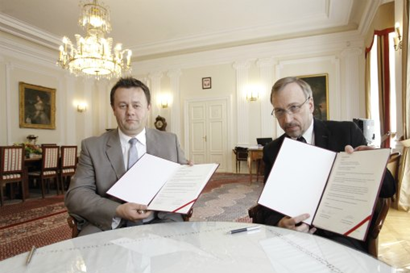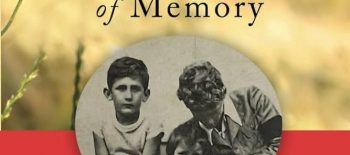The Division for Looted Art
The Ministry of Culture and National Heritage
This program is recommended by the Polish Cultural Institute New York.
Content courtesy the Polish Ministry of Culture and National Heritage.
On September 1, 2022, at the Royal Castle in Warsaw, the Jan Karski Institute of War Losses presented The Report on the Losses Sustained by Poland as a Result of German Aggression and Occupation during the Second World War, 1939–1945 with an introduction by Arkadiusz Mularczyk, The Deputy Minister of Foreign Affairs of the Republic of Poland and Government Plenipotentiary for the Compensation of Damages Caused by the German Aggression and Occupation in 1939–1945. Below excerpt refers to the Loss of Cultural Assets and Works of Art.

Over 70 years have passed since the end of the Second World War, but even so, this has proved to be too little time to solve the problem of recovering lost Polish cultural property. Polish Wartime Losses are considered to be moveable cultural property, lost from public, private and church collections, from within the post-1945 borders of Poland, as a result of the Second World War. The Division for Looted Art is part of the Department of Cultural Heritage which comes under the Ministry of Culture and National Heritage. Their activities include:
- gathering information on cultural property lost as a result of the Second World War
- running the only national database of wartime losses
- searching for cultural property lost as a result of the Second World War
- popularising the subject of wartime losses by publishing catalogues, running an internet service and involvement in additional projects e.g. The Lost Museum, among others
- recovery of lost cultural property which has been found in Poland and abroad
Currently, the Ministry of Culture and National Heritage has a broad spectrum of possibilities in the area of recovery of lost cultural property. In recent years, cooperation with the Police and the Prosecutor’s Office has become closer as well as with foreign and international law enforcement organisations, e.g. the American federal Agency of Investigations–Homeland Security Investigations and the Federal Bureau of Investigation. There have also been several instances of help from Polish diplomatic and consular offices. In particularly difficult cases, the services of professional legal companies are engaged.
The electronic database of Wartime Losses belonging to the Division for Looted Art, which is part of the Department of Cultural Heritage, is the only national register of cultural property lost as a result of the Second World War from within the post 1945 borders of Poland. Its main aim is to inventory the best information gathered on the topic of sites, which were plundered as a result of warfare. All the data logged in the database forms the basis of searches for wartime losses and also any restitution activities undertaken by the Division. To date, information on over 63 000 sites has been gathered (including complexes).
These sites have been divided into 23 sections:
- Archaeology
- Archives
- Libraries
- Ceramics
- Architectural Details
- Ethnography
- Instruments, apparatus, clocks
- Dolls, puppets, toys, games, various
- Paintings
- Polish Paintings
- Foreign Paintings
- Coins and medals
- Vehicles
- Sculpture
- Glass
- Fabrics, carpets, embroidery, lace. Clothes and fashion accessories
- Wooden products; furniture and equipment
- Products from base metals, militaria
- Products from horns, bones, tortoiseshell and amber, laquerware
- Leather goods and products from feathers
- Various collections
- Goldsmithing, Jewellery and gems
The contents of the records look like learning cards in structure, gathered in the framework of museum documentation. Each card is made up of basic information regarding the historical item, i.e. section, type of historical item, title, author/school/workshop and date of creation as well as more detailed data which includes information on the dimensions, materials, technique, a description, inventory number, signatures and inscriptions. Of particular importance are identifying features of a given object, even including characteristic damage.
The cards also include data regarding the owners of the items and their heirs, the fortunes of the item before its loss, the circumstances and date of loss, the circumstances and place of its being found and retrieval. In the ‘source’ part of the card, information regarding the bibliography, archives and pictures of the item can be found. Information of losses regarding moveable objects is developed in cooperation with museums, archives and libraries and also thanks to the help of scientists or private individuals. The gathered information is successively verified and completed.
Since 1994 the Ministry of Culture and National Heritage has published information about moveable cultural property lost from the post-1945 terrain of Poland as a result of the Second World War. By the end of 2012, 19 volumes were published as part of a series entitled “Polish Cultural Losses,” including catalogues presenting wartime losses in the area of Polish paintings and foreign, ancient art, graphics and drawings from the collection of Jacob Kabrun as well as historical bells.
The catalogue is mostly sent to museums, domestic and foreign auction houses, Polish diplomatic representations as well as institutions involved in provenance research. In order to broaden the group of recipients, the catalogues were also published in English.

The Works of Art Recovery Program
On 18th June 2012, the Minister of Culture, Bogdan Zdrojewski, and the Chairman of the Kronenberg Foundation with Citi Handlowy, Krzysztof Kaczmar, signed and intentional letter in which The Works of Art Recovery Program was formed. Its aim is to recover those works of art lost by Poland during the Second World War and which are impossible to recover through legal action and all other methods of bringing them back to Poland have been exhausted. It will be possible to pass the recovered works of art to national institutions (museums and galleries, etc), to their original owners or their legal heir and, if there is no such person, to institutions recommended by the Ministry.
Lead image: Photo: Twitter @PLinTokyo. Source: TVP World.




